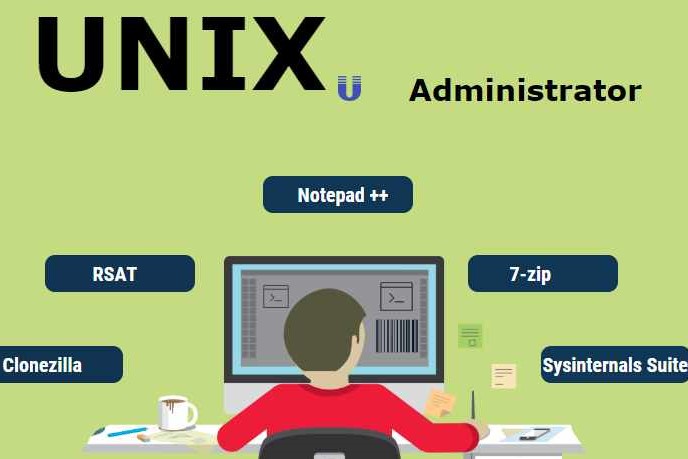Course Information
- Course Price $250
- Total Students 800+
- Course Duration 4 Weeks
Description
A Unix shell script is a readable text file comprising a group of commands that could also be implemented manually one-by-one when there is a Unix operating system command prompt. The shell is generally considered as an easy domain-specific program language. The typical functions performed by shell scripts comprise file management, printing text and program implementation.
Benefits
- Unix family comprises several variants of Unix OS present now including Microsoft’s Xenix, Linux, Ubuntu, Apple’s macOS etc.
- Being the first portable operating system, Unix varies from its predecessors and is written totally in C language.
- One of the highlights of Unix is its shell script which was applied as the primary user interface before the graphical user interface.
- Nowadays, Unix is utilized only in command prompt to perform a huge number of activities.
- Unix is a dynamic programming method that can assist you in learning the command line in an efficient manner, save time, and not worry about difficult file management activities.
- Shell scripting is the core of making OS function. With an increasing requirement for quick processing of huge amounts of data produced by applications, Unix is indeed a good option to mitigate the turnaround time for the job.
Syllabus
Backslash character constants Variables
- What is variable
- System defined variables
- Environment files
- User defined variables
- Constant variables
- Local & global variables
- Special variables
Operators
- Arithmetic variables
- Relational numeric operators
- Logical operators
- Assignment operators
Conditional statements
- if, if….else
- if, elif
- case
Looping
- while, until, for
- break, continue
File test commands
String test commands
exit & sleep commands
Command line arguments
- Usage of COA
- What is $0, S#, $*, $@, $? , $$
Job scheduling
- cron
- at
- batch
Compiling and execution of C and C++ programs
Unix-Shell Scripting
- History of UNIX
- Features of UNIX
- Flavors of UNIX
- Comparison of UNIX with Windows
- Architecture of UNIX
- UNIX File System
Different types of Files
- Regular Files
- Directory Files
- Device Files
Basic Commands
- pwd, logname, who, finger
- Exit, date, cal
Creating Users & Groups
- groupadd, groupdel
- useradd, userdel
System startup & Shutdown
- Init, halt, shutdown
- Different Run levels
- Different date formats
Working with files
- cat, touch, rm
- cp, mv
Working with Directories
- mkdir, cd, rmdir, rm –r
Standard Input & Output
- Redirecting output
- Redirecting Input
Comparing Files
- cmp, diff, comm
Searching files
- find, locate, which
Zip files
- gzip, gunzip
Displaying files
- ls, ls options
Viewing long files
- pg, more, head, tail
File Permissions
- chmod, chown, chgrp, umask
Meta/Wild Card-characters
- Class, Anchors
- Repetition, Alteration
- Group, Dot
Regular Expressions & Patterns
- What is pattern
- Usage of regular expression
- Different types of pattern
- Character pattern
- Word pattern
- Line pattern
Tools for Filters
- grep, grep with options
- Flat files
- What are delimiters and its types?
- Reading and Writing to files
Tools for column data
- cut, paste
Tools for sorting
- Sort by lines, Sort by fields
- Sort with options, uniq
Changing information in files
- tr, sed
Piping
- usage of piping
- piping with filters
- tee command
Communication Tools
- write, wall
- mail, mail with options
Networking protocols
- telnet, ftp
Disk status
- du, df with options
Job control
- Foreground jobs, background jobs
- Killing jobs, nohup
Process status
- ps , ps with options
Editor Vi
- 3 modes
- Command mode
- Insert mode
- Ex command mode


